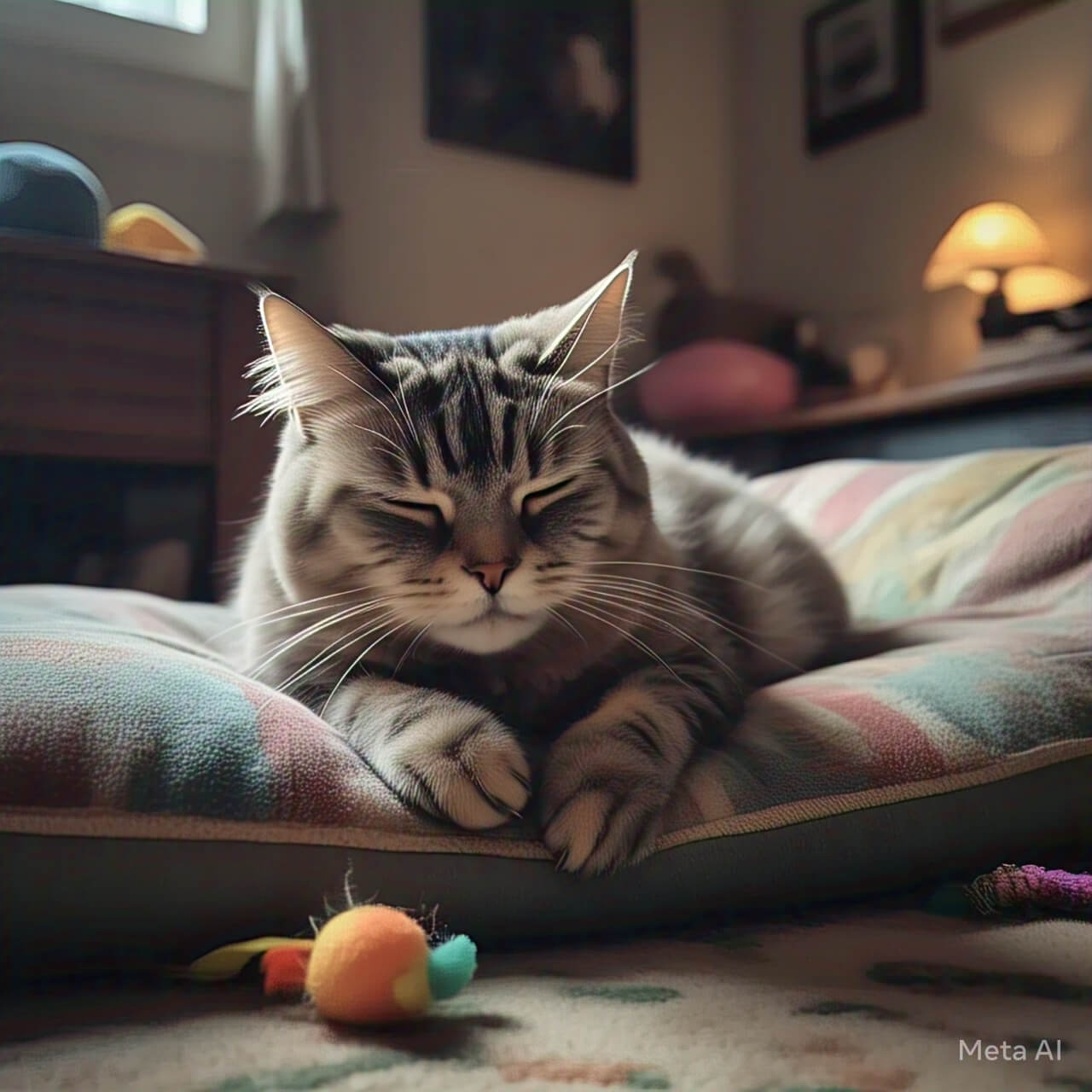How to Help a Cat with Arthritis: Arthritis is a common problem in older cats, causing joint pain and stiffness. Cats are good at hiding pain, so owners may not notice until the condition gets worse. Signs include limping, trouble jumping, less activity, and irritability. If your cat has arthritis, there are many ways to help them feel better.
Simple changes at home, like soft bedding and easy-to-reach food, can make a big difference. A vet can suggest treatments like pain medicine, supplements, or special diets. Gentle exercise and weight control also help keep joints healthy. With the right care, an arthritic cat can still enjoy a happy and comfortable life.

10 Tips to Help a Cat with Arthritis
- Use soft, warm bedding.
- Keep food and water easy to reach.
- Help them stay at a healthy weight.
- Give joint supplements like glucosamine.
- Use ramps or steps for high places.
- Gentle play keeps joints moving.
- Massage their legs if they allow it.
- Keep their litter box low-sided.
- Ask the vet about pain relief.
- Keep them warm in cold weather.
1. Recognizing Arthritis in Cats
Cats hide pain well, so owners must watch for small signs. A cat with arthritis may limp, avoid jumping, or move slower. They might sleep more, groom less, or seem grumpy when touched. Some cats stop using the litter box if it’s hard to climb into. If your cat hesitates before jumping or has trouble stretching, arthritis could be the cause. A vet can check with an exam or X-rays. Early help prevents worse pain later.
2. Providing Comfortable Sleeping Areas
Arthritic cats need soft, warm places to rest. Hard floors make joints stiff, so use padded beds or blankets. Heated pet beds (not too hot) ease achy joints. Place beds in quiet spots where your cat feels safe. If they like high places, add steps so they don’t have to jump. Older cats may prefer ground-level spots. A cozy nest helps them relax and reduces pain.
3. Adjusting Food and Water Bowls
Bending down to eat can hurt an arthritic cat’s neck and legs. Raise their bowls to chest height so they don’t strain. Use shallow dishes for easy access. Keep food and water close to their favorite resting spots so they don’t have to walk far. Wet food helps if they drink less water. A good diet also keeps their weight in check, which reduces joint stress.
4. Managing Your Cat’s Weight
Extra weight puts more pressure on sore joints. If your cat is overweight, ask the vet for a diet plan. Feed measured portions and avoid too many treats. Weight loss should be slow to stay healthy. A lighter cat will move easier and feel less pain. Regular, gentle play helps burn calories and keeps joints flexible.
5. Using Joint Supplements
Supplements like glucosamine and chondroitin support joint health. Omega-3 fatty acids (found in fish oil) reduce inflammation. These take weeks to work, so be patient. Always check with your vet before giving supplements. Some cat foods already include these ingredients. Natural options like turmeric (in small amounts) may also help.
6. Making Your Home Arthritis-Friendly
Arthritic cats struggle with jumping and climbing. Add pet ramps or small steps to beds and sofas. Keep litter boxes low-sided for easy entry. Place rugs on slippery floors so they don’t slip. Block off high places they can’t safely reach anymore. Small changes make daily life easier for them.
7. Encouraging Gentle Exercise
Movement keeps joints from stiffening. Short play sessions with toys that don’t require jumping help. Try feather wands or rolling balls. If your cat resists play, just petting and stretching their legs gently can help. Don’t force them—let them move at their own pace.
8. Trying Massage and Warmth
A gentle massage improves blood flow and eases stiffness. Rub their legs and back softly if they allow it. Warmth also helps—use a heated pad (on low) or a warm towel. Avoid extreme heat. In winter, keep your home warm and draft-free.
9. Consulting the Vet for Pain Relief
Vets can prescribe pain medicine safe for cats. Never give human painkillers—they are toxic to cats. Treatments may include anti-inflammatory drugs, laser therapy, or acupuncture. Regular check-ups ensure the treatment works without side effects.
10. Keeping Your Cat Happy and Loved
Arthritis can’t be cured, but love and care make life better. Spend time petting and talking to your cat. Be patient if they move slower or seem grumpy. Adjust routines to their needs. A happy cat handles pain better.

FAQs About Cats with Arthritis
| Question | Answer |
|---|---|
| How do I know if my cat has arthritis? | Watch for limping, trouble jumping, less activity, or irritability. A vet can confirm. |
| Can arthritis be cured in cats? | No, but pain can be managed with medicine, supplements, and home care. |
| What human painkillers are safe for cats? | None—human painkillers are dangerous. Always ask a vet for cat-safe options. |
| Does cold weather make arthritis worse? | Yes, cold can stiffen joints. Keep your cat warm with soft bedding and heated pads. |
| Should I stop my cat from jumping? | Yes, provide steps or ramps to prevent painful jumps that strain joints. |
With these tips, your arthritic cat can stay comfortable and happy. Always work with your vet for the best care plan.









